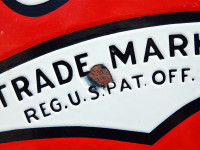Bell’s promotion of a site blocking system in Canada – rejected by the CRTC on jurisdictional grounds – was grounded in the view that it could establish a mandated blocking approach without court orders. That placed the Canadian proposal off-side the vast majority of site blocking systems around the world, but it also pointed to mounting efforts to exclude the courts from the realm of copyright enforcement. For example, the Canadian Anti-Counterfeiting Network recently appeared before the Industry committee to argue for legislative reforms that would eliminate court oversight for seizures at the border. In its place, the group argued that customs authorities should be empowered to seize and destroy goods without court review.
Post Tagged with: "trademark"
Tackling IP Misuse: Canada Takes the Lead in Combating the Dark Side of Intellectual Property Protection
Navdeep Bains, Canada’s Innovation, Science and Economic Development Minister, unveiled the government’s long-awaited intellectual property strategy Thursday by responding to the need to increase IP awareness, develop new IP tools for businesses, and counter IP misuse that harms both consumers and businesses. The plan to introduce new legislative rules to discourage misuse of intellectual property is particularly noteworthy since the rules should help foster a more progressive, balanced, and innovative legal framework.
My Globe and Mail op-ed notes that with proposed reforms to all of Canada’s main IP statutes, the government is taking the lead in combating the dark side of intellectual property protection. Since abuse of intellectual property rights may inhibit companies from innovating or discourage Canadians from taking advantage of the digital market, crafting rules that address misuse can be as important as providing effective protection.
Canada’s Innovation Strategy Must Stop Tech Trolls
Developing a national innovation strategy has been a top priority of Navdeep Bains, Canada’s Minister of Innovation, Science and Economic Development. Bains has created an expert panel, held meetings across the country, and launched a public consultation in the hope of identifying policies that might enhance Canada’s lacklustre innovation record.
While some have used the consultation to call for expanded intellectual property rules, the reality is that Canada already meets or exceeds international standards. The more pressing innovation issue is to address the abuse of intellectual property rights that may inhibit companies from innovating or discourage Canadians from taking advantage of the digital market.
My technology law column (Toronto Star version, homepage version) notes the benefits of an anti-IP abuse law could be used to touch on the three main branches on intellectual property: patents, trademarks, and copyright.
The Trouble With the TPP, Day 31: Canadian Trademark Law Overhaul
The Trouble with the TPP continues with another area of intellectual property that is subject to an overhaul due to largely to the trade agreement: trademark law. The Canadian government’s summary on the issue once again understates the significance of the changes with assurances that the TPP is “in line with Canada’s existing regime” and “supports Canada’s progress to accede to the Madrid Protocol and Nice Agreement.”
The reality is that government recently passed a massive overhaul of trademark law with little consultation or debate in anticipation of the TPP requirements. In fact, government negotiators opposed some of the trademark requirements in the TPP until very late in the negotiations (including some of the Nice Agreement provisions) recognizing that it was not consistent with Canadian law at the time. The planned Canadian changes are not expected to come into force until 2018 at the earliest.
The Trouble with the TPP, Day 22: Expanding Border Measures Without Court Oversight
The Trouble with the TPP series continues with IP enforcement and border measures provisions, which are illustrative of Jim Balsillie’s concern about Canada’s failure to set its own IP policy. Yesterday’s post noted that the U.S. demanded that Canada provide a report card every six months on its customs activities, meet on the issue whenever the U.S. demands, and face the possibility of a dispute settlement complaint for failing to comply with these rules. The TPP goes further, however, as it will require Canada to create a system to allow for the detention of goods with “confusingly similar” trademarks.
Article 18.76 of the TPP establishes “special requirements related border measures” which includes allowing for applications to detain suspected confusingly similar trademark goods as well as procedures for rights holders to suspend the release of those goods. The required change is striking since Canada just overhauled its rules for border measures under pressure from the U.S. The Canadian approach did not include “confusingly similar” trademark goods, recognizing that such goods are not counterfeit and that requiring border guards (who rarely have legal training) to make exceptionally difficult judgments about whether imported goods violate the law is bad policy.











